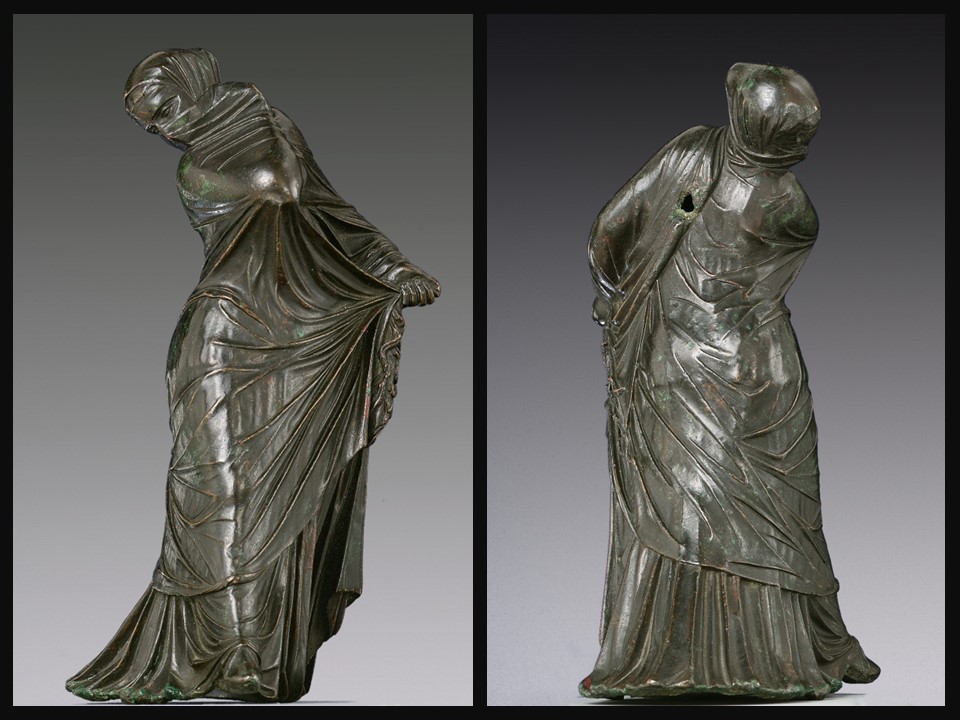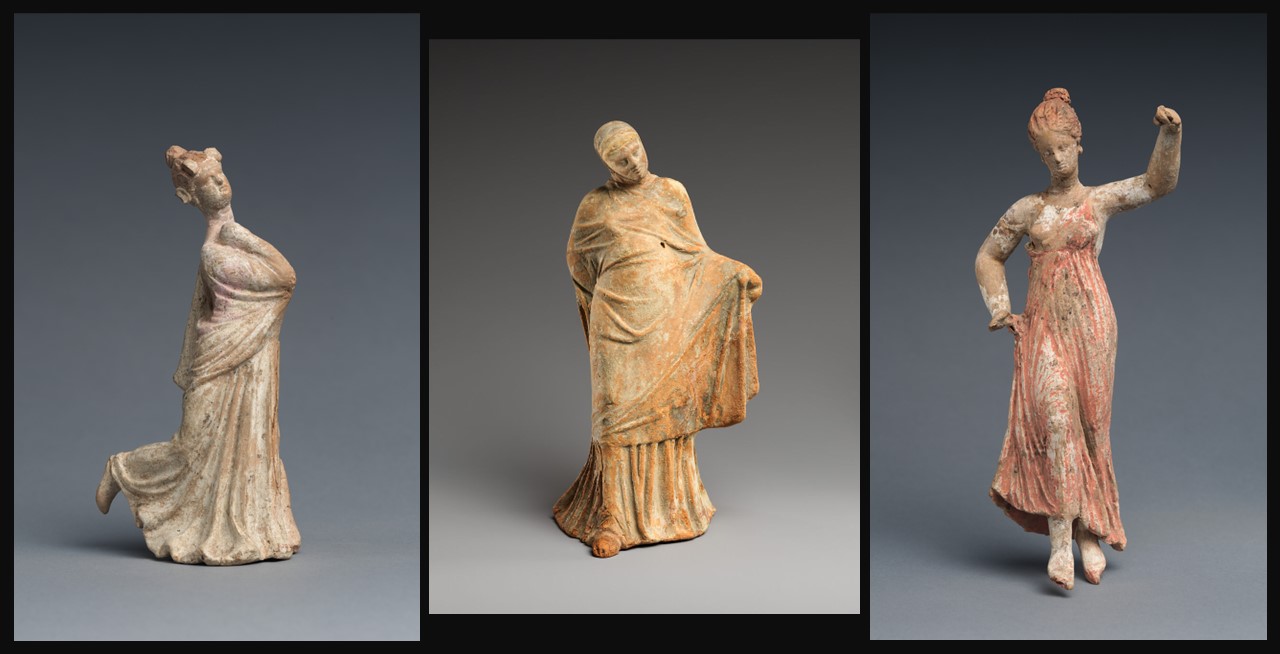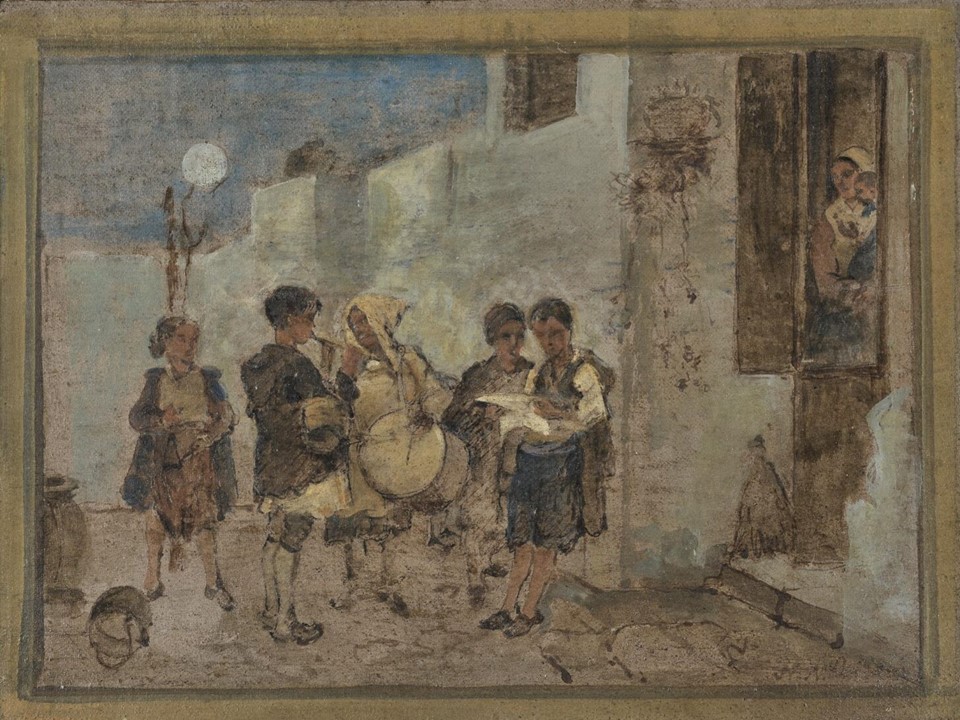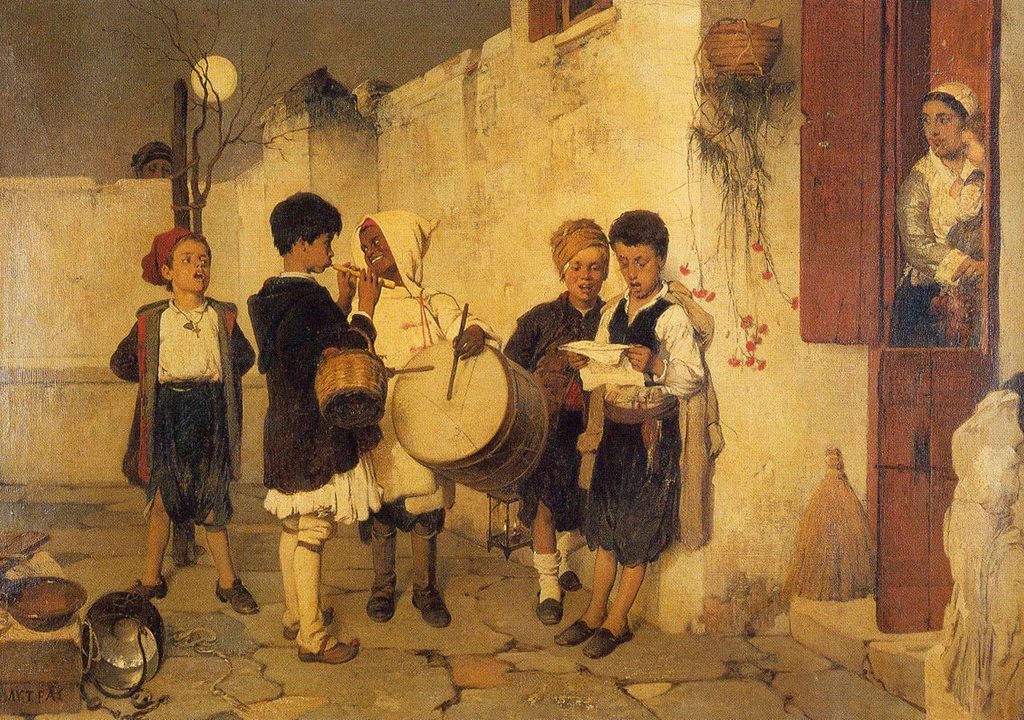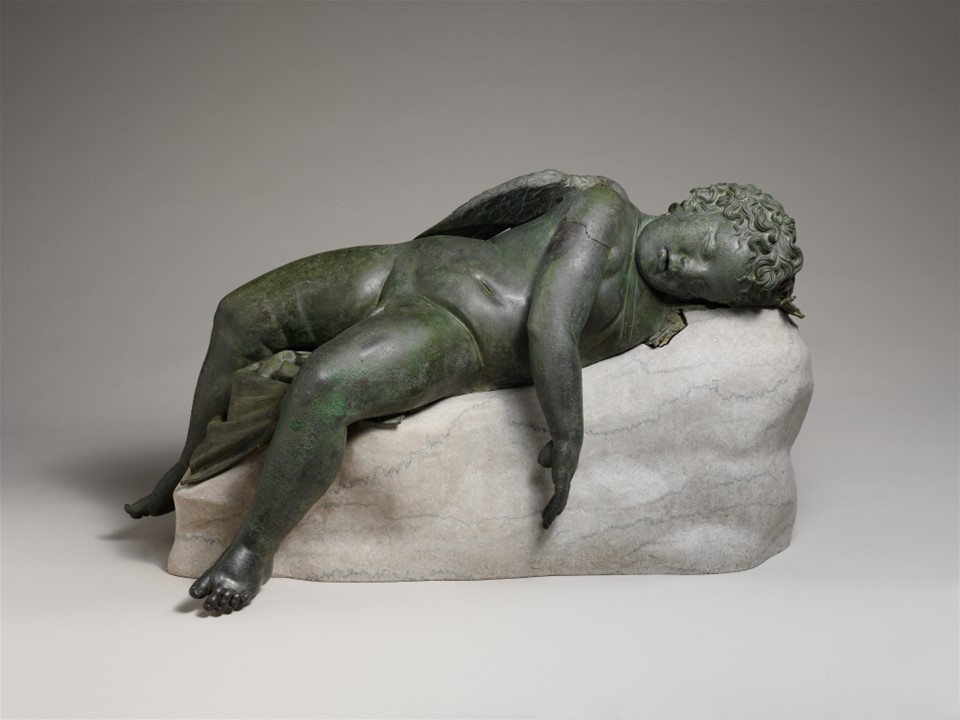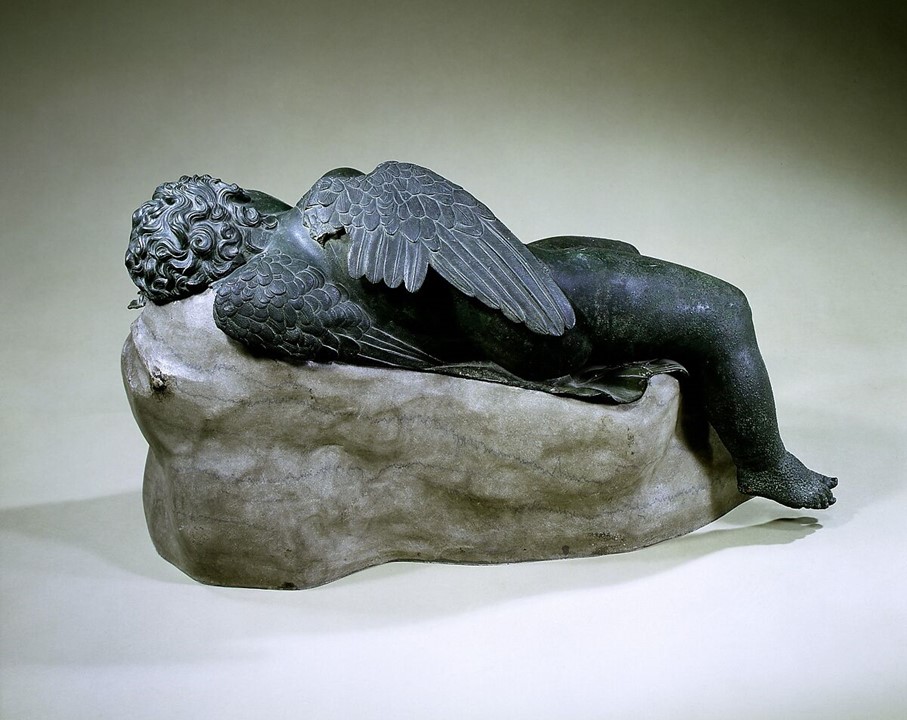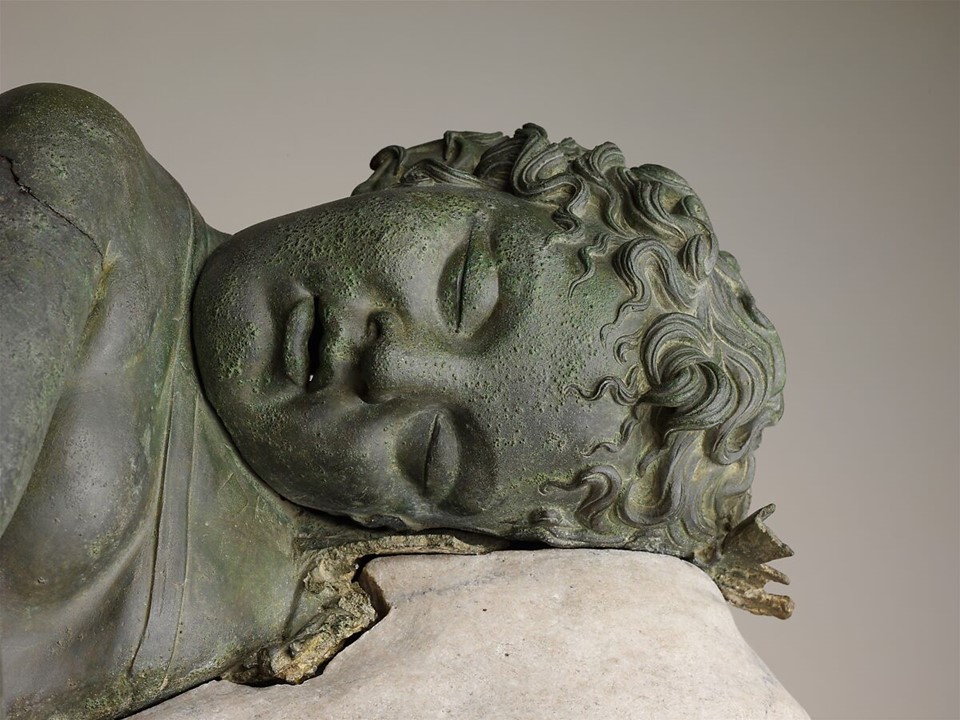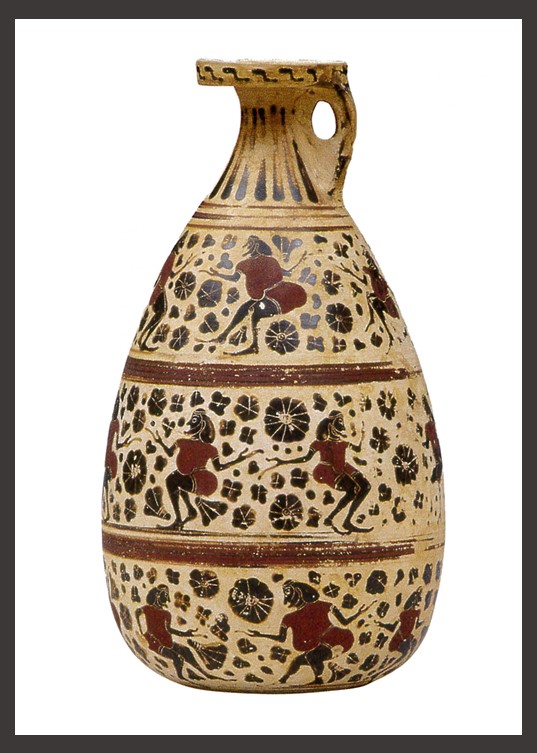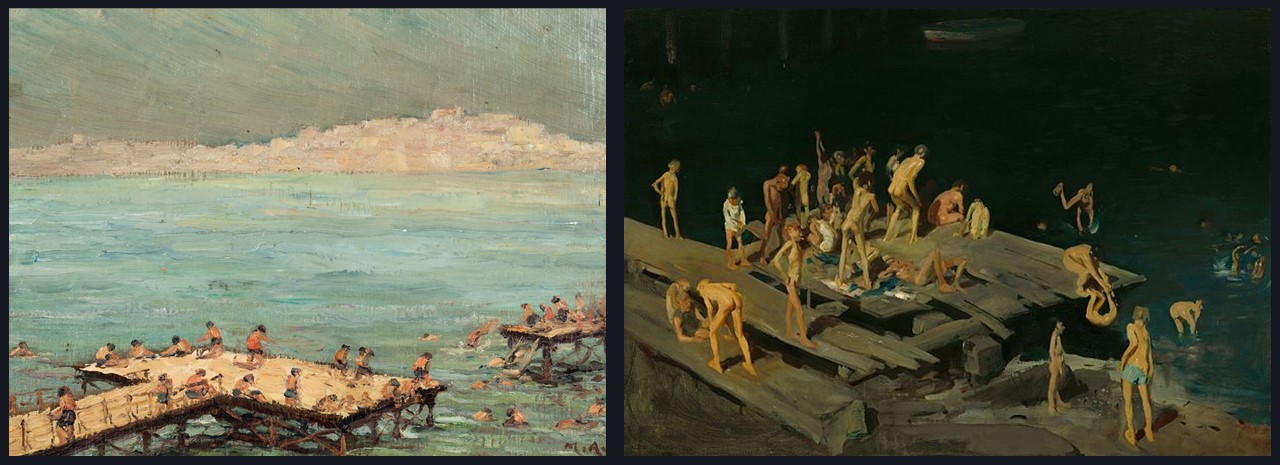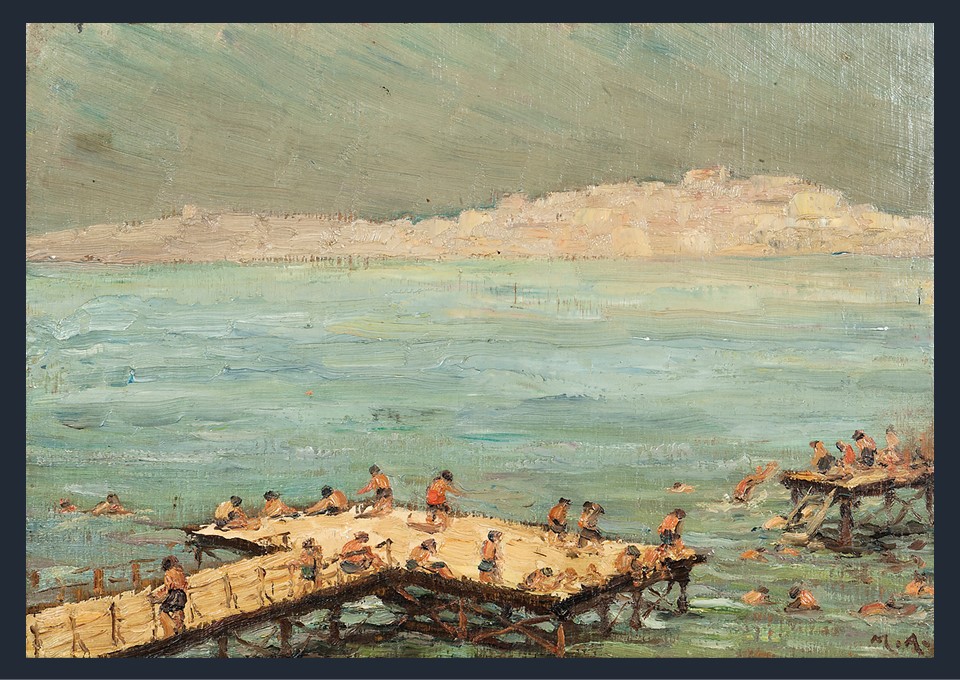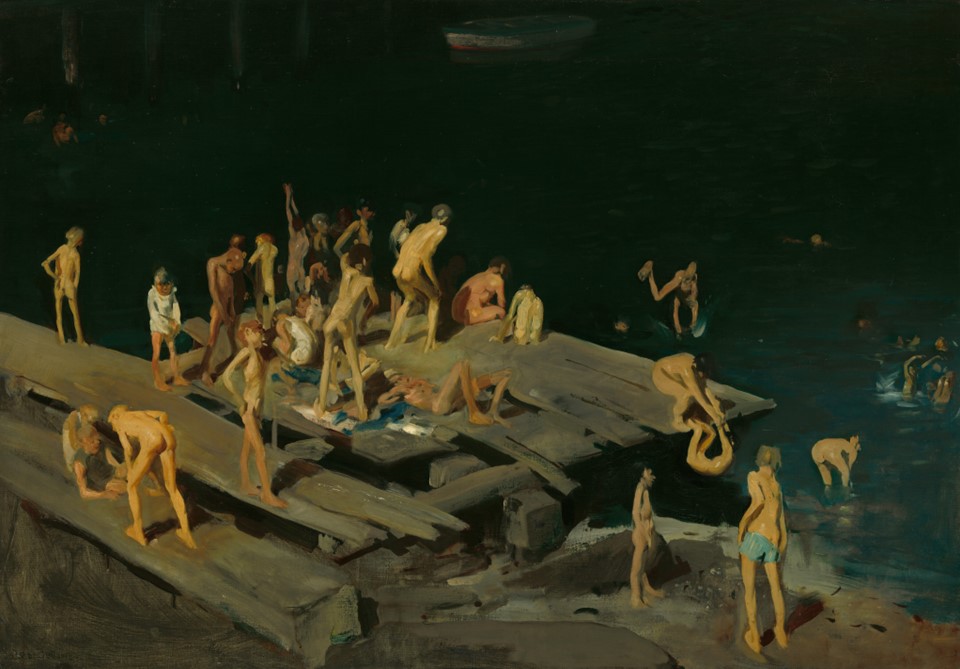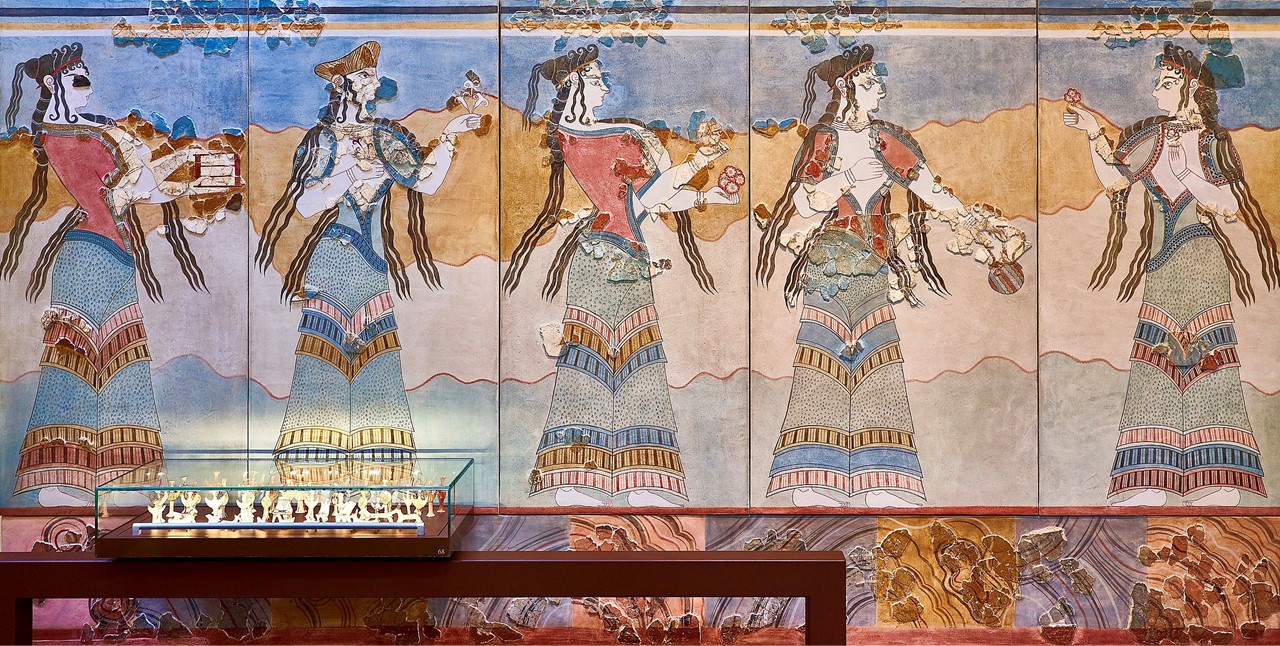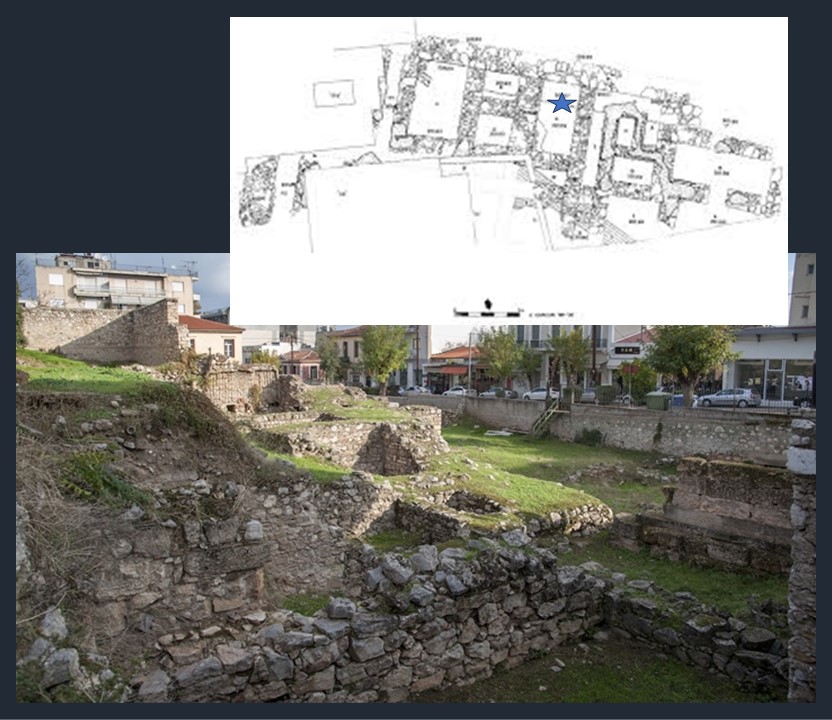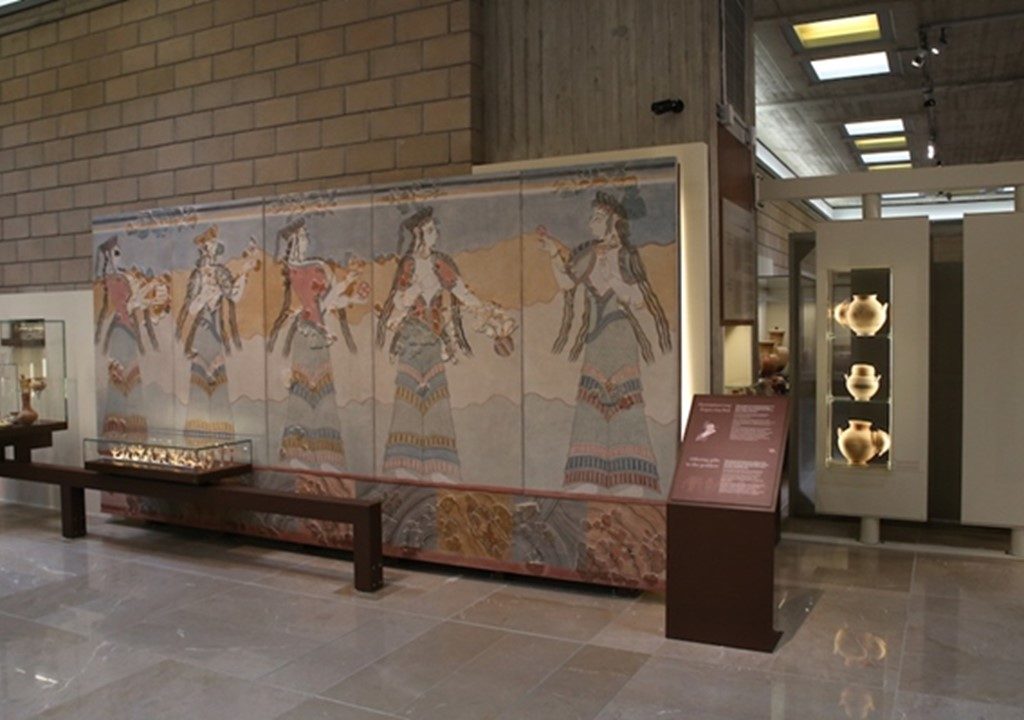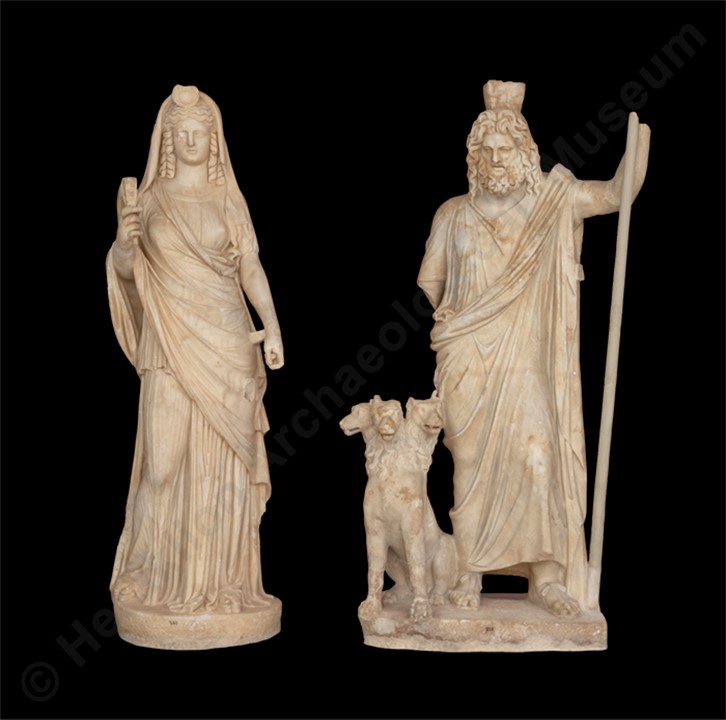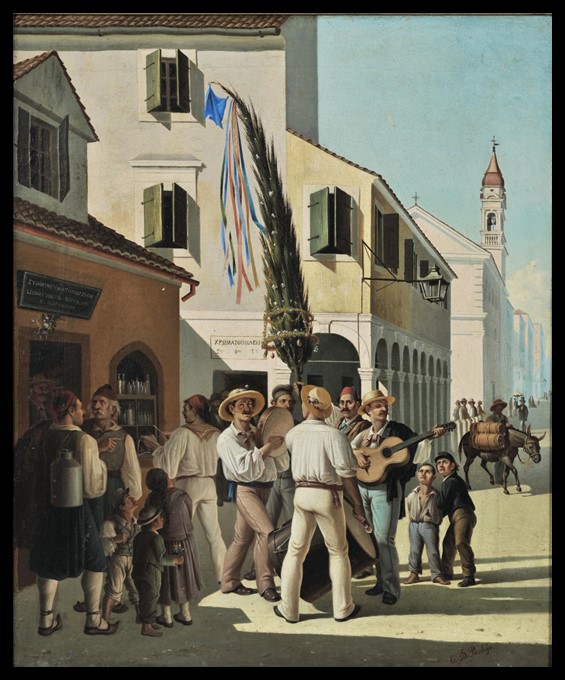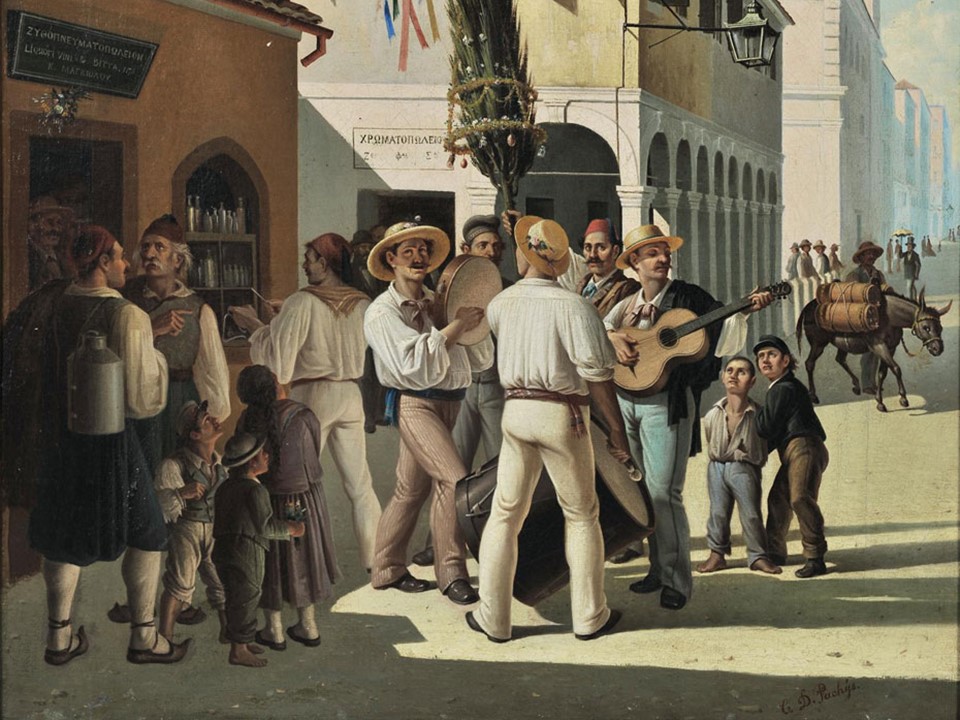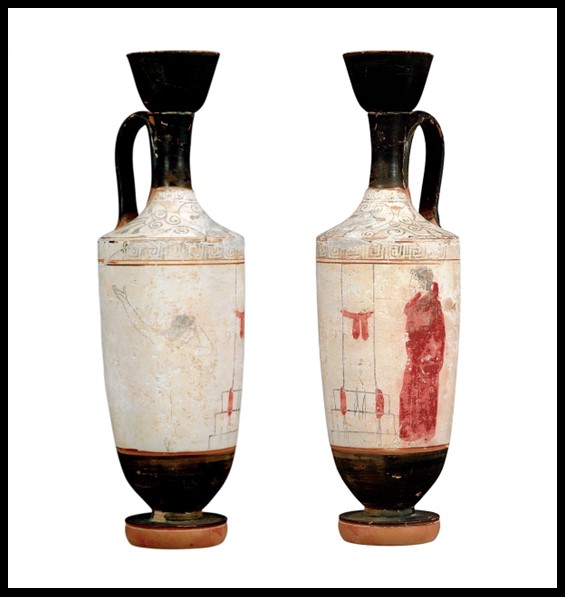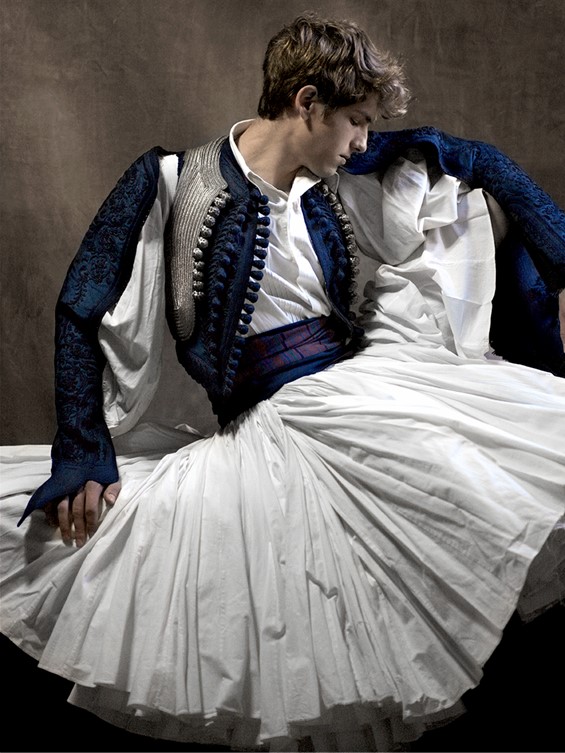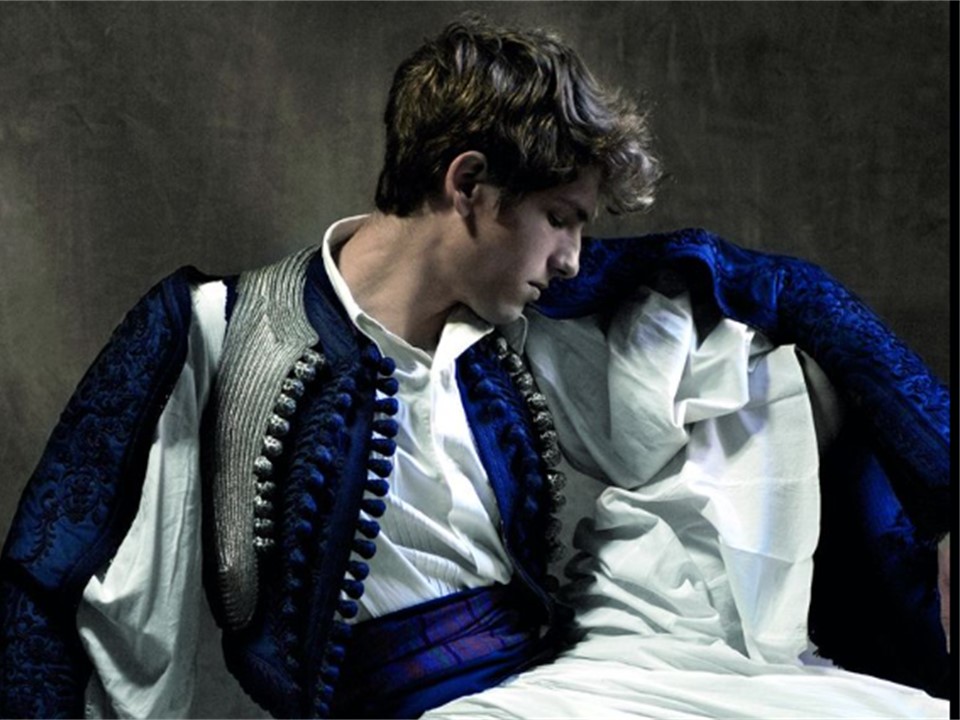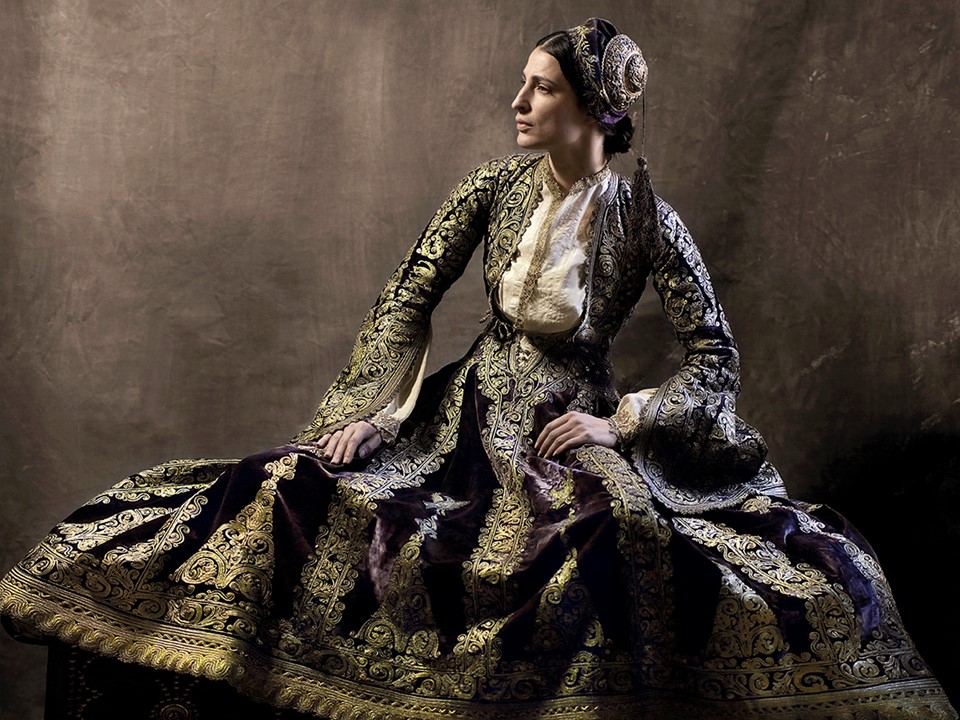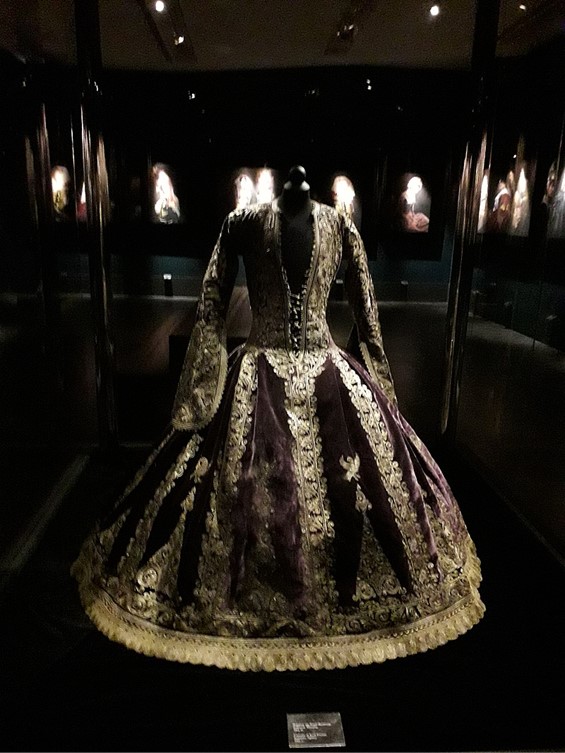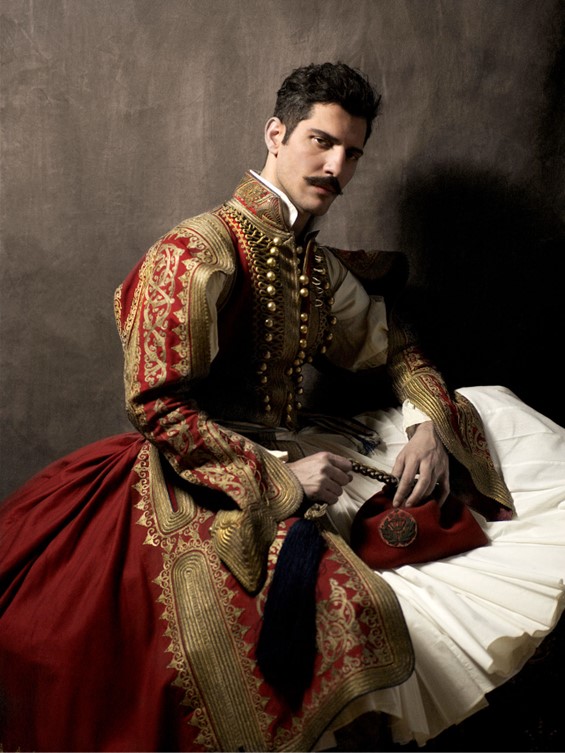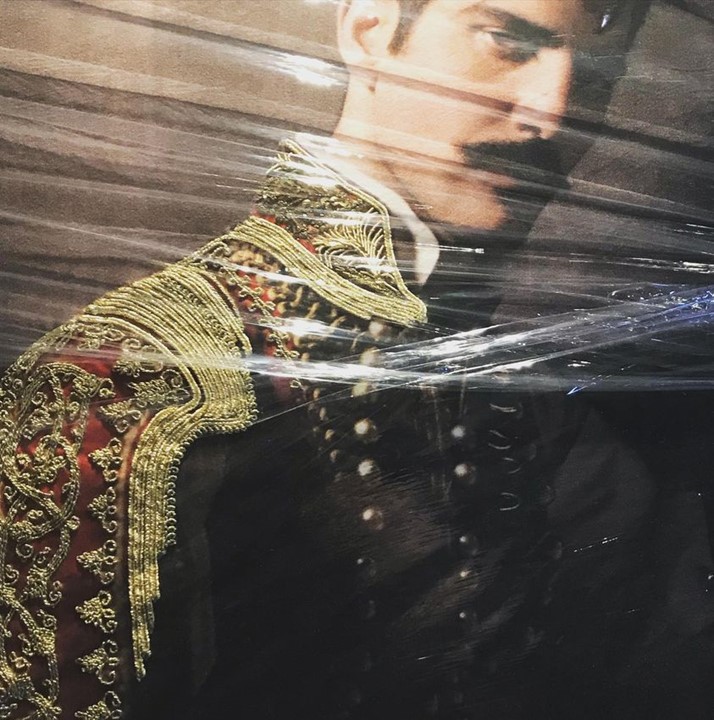One of the most frequent themes in the Mycenaean wall painting is a procession of lifesize women in Minoan Dress (tight bodice with exposed breasts and flounced skirt), each figure bearing an offering and proceeding either to the left or right toward an unspecified goal, which was very likely a seated representation of the goddess. A circa 1400 BC fresco example, titled Mycenaean Procession of Female Worshippers comes, from the Kadmeia Palace in Thebes… and is exceptional! Three articles provided me with the necessary information so I can better understand the fresco’s importance. The same articles helped me codify six interesting facts about it… (see Bibliography)
Fact 1: Kadmeia Palace in Thebes was the nucleus of many important Greek Myths… it was connected to Gods and Heroes! The city of Thebes in ancient Greece has a rich mythological tradition. It starts with Kadmos, the Phoenician Prince, who searched for his abducted sister Europa and eventually settled in Boeotia, where he founded the city of Thebes, and built the first Palace. The myth of Oedipus, tragic in every aspect, and the riddle of the Sphinx, is equally known. The myth of the Seven Against Thebes revolves around the conflict between Eteocles and Polyneices, both sons of Oedipus, the fight over the rule of Thebes, and the heartbreaking end of Antigone, their sister, who became a symbol of resistance against unjust laws. Finally, the myth of Zeus, Semele, and Dionysus was closely connected to Thebes and the Palace of Kadmos.
Fact 2: The Greek archaeologist who discovered, in 1906, the Theban Palace, and subsequently the Procession of Female Worshipers fresco was Antonios Keramopoulos. In 1906 Antonios Keramopoulos was the first archaeologist to excavate, in the city of Thebes, a sizable and well-built, but burnt building of the Mycenaean period. He also discovered fragments of a Procession fresco, pieces of gold, agate or quartz artifacts, and numerous jars inscribed with the undeciphered then, Linear B script. Keramopoulos compared his discovery with similar discoveries in Mycenae or, for example, Pylos, and concluded that what he discovered was the Palace of Kadmos, the legendary founder of Thebes.
Fact 3: The Procession of Female Worshipers fresco was discovered in Room N (marked with a Blue Star) of the Old Kadmeia Palace. Early during the Keramopoulos excavations, fragments of fresco pieces were discovered in Room N (marked with a Blue Star in the Photo). These fragments employed both the buon fresco and the fresco al secco techniques. Keramopoulos decided that these fragments were part of a long, probably 14 m, fresco presenting a life-size Procession of Female Worshipers, facing both right and left.
Fact 4: The Procession of Female Worshipers fresco found in the Old Kadmeia Palace dates from the Early 14th century BC ( LH III A period, 1400-1300 BC). It is the oldest such fresco discovered in mainland Greece. The Procession of Female Worshipers fresco in the Theban Palace is the oldest wall painting discovered in Boetia. In 1978, Dr. Christos Boulotis embarked on fresh research regarding this fresco. During his investigation, he stumbled upon “forgotten” pieces stored in the warehouse of the Theban Museum. Dr. Boulotis added these fragments to the existing Procession fresco and reassembled the fresco’s composition. By conducting extensive research, comparisons with Mycenaean frescoes, and new local finds, Dr. Boulotis proposed a date of the 14th century BC for the fresco.
Fact 5: The Procession of Female Worshipers fresco in the Palace of Thebes marks the beginning of the Boaetian fresco School of Painting. Dr. Christos Boulotis once again proposed the Palace of Thebes to be established as the focal point of a Boetian workshop, responsible for disseminating innovative ideas in fresco painting across the Palatial areas of Central Greece. To support his proposition, Dr. Boulotis drew comparisons between frescoes found in the Theban Palace, such as the Procession of Female Worshipers, and those discovered in locations like Gla and Orchomenos. Additionally, Dr. Boulotis put forth the idea that groups of itinerant artists, initially from Crete, introduced the Minoan style of fresco painting to Palatial centers in the Peloponnese. The same groups trained local Mycenaean artists who then transmitted the newly developed Mycenaean style of fresco painting to Thebes. The presence of resemblances in patterns, compositions, and styles further suggests a high probability that these groups of traveling artists possessed “pattern/composition books” for their prospective clients to choose from.
Fact 6: The Procession of Female Worshipers fresco in the Palace of Thebes is the oldest and the finest in mainland Greece. It presents a life-size Procession of Women, finely dressed facing both right and left. The Theban fresco was originally 14 meters long, consisting of three zones: 1. a decorative band in the upper part, 2. the main composition, known as the Procession of Female Worshipers, in the middle, and 3. a lower decorative zone, imitating marble. Interestingly to note is that all pigments were from natural materials, red and ocher, for example, came from iron oxides, and black from carbon. Equally interesting, is that red pigment was used by the Mycenaean painter to outline each female figure.
According to Dr. Immerwahr’s description, the painters of the Theban Procession fresco were excellent draftsmen capable of depicting the human form in a conventional manner while infusing it with a dose of naturalism, allowing the figures to be shown in various positions. The depicted women appear to be wearing the traditional Minoan dress, which is colorful and exquisitely adorned with patterned borders. Their long wavy hair cascades loosely down to their narrow waists. They have spit curls fashioned across the forehead, twisted shoulder coils, and ponytails, some short and others longer. All the women wear fine jewelry, including necklaces and bracelets, each of which is individualized with round-shaped beads, lentoid shapes, or papyriform designs.
This is a large mural composition and a unique fresco of female worshipers striding majestically in two opposite directions, perhaps towards a central female deity who receives their offerings. Archaeologists were able to reconstruct five women from the original composition, one of them facing left, and the other four facing right. According to the latest reconstruction of the fresco, as exhibited in the Archaeological Museum in Thebes, the female worshiper facing left is posing, showing her chest frontally and holding wild roses. Two of the remaining four women facing right are depicted in profile, one of them holding a heavy casket with jewelry, and the other holding wild roses as well. The remaining two worshipers are depicted showing their frontal chests, holding lilies, and a luxury vase, perhaps filled with aromatic oil.
For a PowerPoint on the Mycenaean Procession of Female Worshippers Fresco, please… Check HERE!
Bibliography
1. Aegean Painting of the Bronze Age by Sara A. Immerwahr, The Pennsylvania State University Press, 1990 https://eclass.uoa.gr/modules/document/file.php/ARCH133/%CE%91%CF%81%CF%87%CE%B5%CE%AF%CE%B1%20%CE%B2%CE%B9%CE%B2%CE%BB%CE%B9%CE%BF%CE%B3%CF%81%CE%B1%CF%86%CE%AF%CE%B1%CF%82%20%CF%83%CE%B5%20pdf/Immerwahr%2C%20Aegean%20painting%20in%20the%20Bronze%20Age.pdf
2. Χρήστος Μπουλιώτης, Η Τέχνη των Τοιχογραφιών στη Μυκηναϊκή Βοιωτία, ΕΠΕΤΗΡΙΣ ΤΗΣ ΕΤΑΙΡΕΙΑΣ ΒΟΙΩΤΙΚΩΝ ΜΕΛΕΤΩ, ΤΟΜΟΣ Γ’, ΤΕΥΧΟΣ α’, Αθήνα, 2000 σελίδες 1095-1149 http://users.uoi.gr/gramisar/prosopiko/vlaxopoulos/epetiris.pdf
3. The House of Kadmos in Mycenaean Thebes Reconsidered: Architecture, Chronology, and Context by Anastasia Dakouri-Hild, The Annual of the British School at Athens, Vol. 96 (2001), pp. 81-122 (47 pages) https://www.jstor.org/stable/30073274
An interesting Video titled Mycenaean Thebes, by @HellenicCosmos… https://www.youtube.com/watch?v=rzqIHbCdydk
